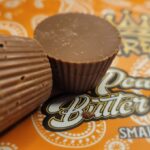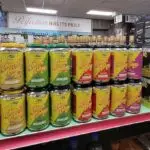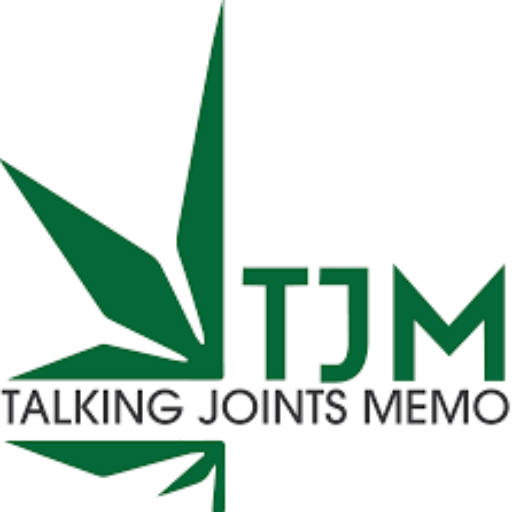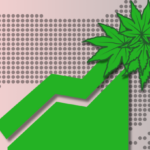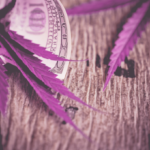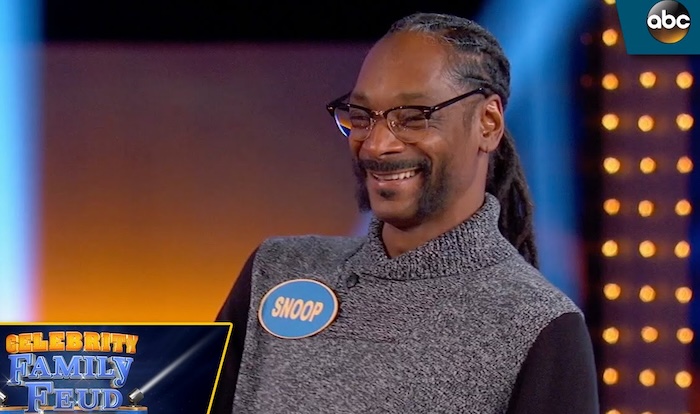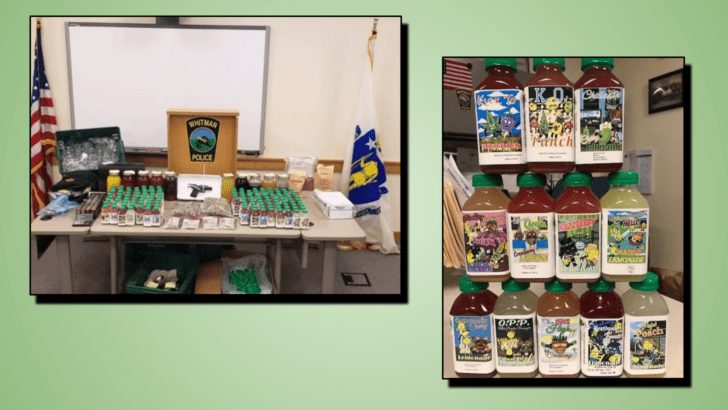
Unless something else out of the ordinary happens between my writing this and DigBoston going to print, it’s pretty clear that the most notable weed-related arrest of the past week goes to Derek Sheehan of Whitman. Here’s WBZ on the matter:
Whitman police said the arrest followed a joint investigation by multiple law enforcement agencies after the suspect … allegedly sold THC-infused drinks to an undercover detective on three occasions earlier this month. …
Police said [the drinks] contained 100-150 milligrams of THC. The drinks were selling for $10-$15 each. … they found 138 bottles of THC-infused drinks, THC-infused cookies, a bag containing mushrooms, THC vape cartridges, marijuana and $5,000 cash in Sheehan’s home. Police allegedly found 25 of the beverages and a pound of marijuana in Sheehan’s car, as well.
That’s not all. According to police:
The drinks were being sold on Facebook and Snapchat and were aimed at young adults, police said. “He was making his own stuff. He certainly wasn’t a pharmacist; he didn’t go to medical school. He was just eye-balling it, making his own stuff, packaging it.”
While it’s clearly a bad look to market toward children (unless you are a liquor brand, in which case you will receive uniformly positive press for selling boozy popsicles at family amusement parks), it seems Sheehan’s big offense here is slinging outside of the regulated cannabis marketplace. That’s fair enough, and anyone of fair mind should be able to sympathize with regulators and recreational investors who oppose all and any gray or black market activity. At the same time, when it comes to the kinds of potent THC drinks that Sheehan was selling, there’s another aspect to consider as well—namely, because of the current state law, such beverages can’t be sold at rec dispensaries, and won’t be available any time soon.
For more insight, here are some relevant sections from the Commonwealth’s Adult Use of Marijuana specifications:
- “Serving size shall be determined by the processor but in no instance shall an individual serving size of any marijuana product contain more than five milligrams of delta-nine-tetrahydrocannabinol.”
- “Packaging for marijuana products in solid form sold or displayed for consumers in multiple servings shall allow a consumer to easily perform the division into single servings.”
- “A Marijuana Product Manufacturer must ensure that each single serving of an edible marijuana product is physically demarked in a way that enables a reasonable person to intuitively determine how much of the product constitutes a single serving of active THC.”
- “Each serving of an edible marijuana product within a multi-serving package of edible marijuana products must be easily separable in order to allow an average person 21 years of age or older to physically separate, with minimal effort, individual servings of the product.”
- “Each single serving of an edible marijuana product contained in a packaged unit of multiple edible marijuana product shall be marked, stamped, or otherwise imprinted with a symbol or easily recognizable mark issued by the Commission that indicates the package contains marijuana product.”
Do you see where I’m going with this? Basically, since liquids can’t be “demarked,” made “easily separable,” “stamped,” or “imprinted with a symbol or easily recognizable mark,” the most THC that any unit can contain under the current law is 5%. Which, depending on one’s tolerance, may be nowhere close to enough to get high. Making it so that a heavy cannabis consumer could have to chug half-a-dozen drinks before feeling a buzz.
“It’s simple,” says Graham Wilson, executive director of CannaBiz of Mass, a trade association for the industry. Wilson, who worked in the marketing department at DigBoston once upon a time, is currently working with beverage manufacturers to tweak the rules. He continues: “If you get a chocolate bar with 100 mg [of THC], that has to be divided into 5mg dosages, it has to be able to be split into 5mg pieces. But when it comes to liquids, you can’t divide it up. These are the laws of nature we’re working with.”
As a likely result, so long as the current regulations are in place, chances are we’ll see a lot more cases in which basement drink producers catch hard cases over cases of fruit punch. As well more pics on the Instagram accounts of Mass police departments showing off their tables full of colorfully labeled confiscated lemonade.
“It’s not just beverages,” Wilson says. “You can’t break up effectively some other types of edibles that people desire either. This is putting the brakes on edibles right now.
“There’s not going to be innovation in product. In regards to [cannabis-infused] beverages, the industry has hit a wall already. We understand how wine works—stick it in a bottle and cork it up. We just don’t have a history of how we go about producing, distributing, and serving this [THC] product.”







